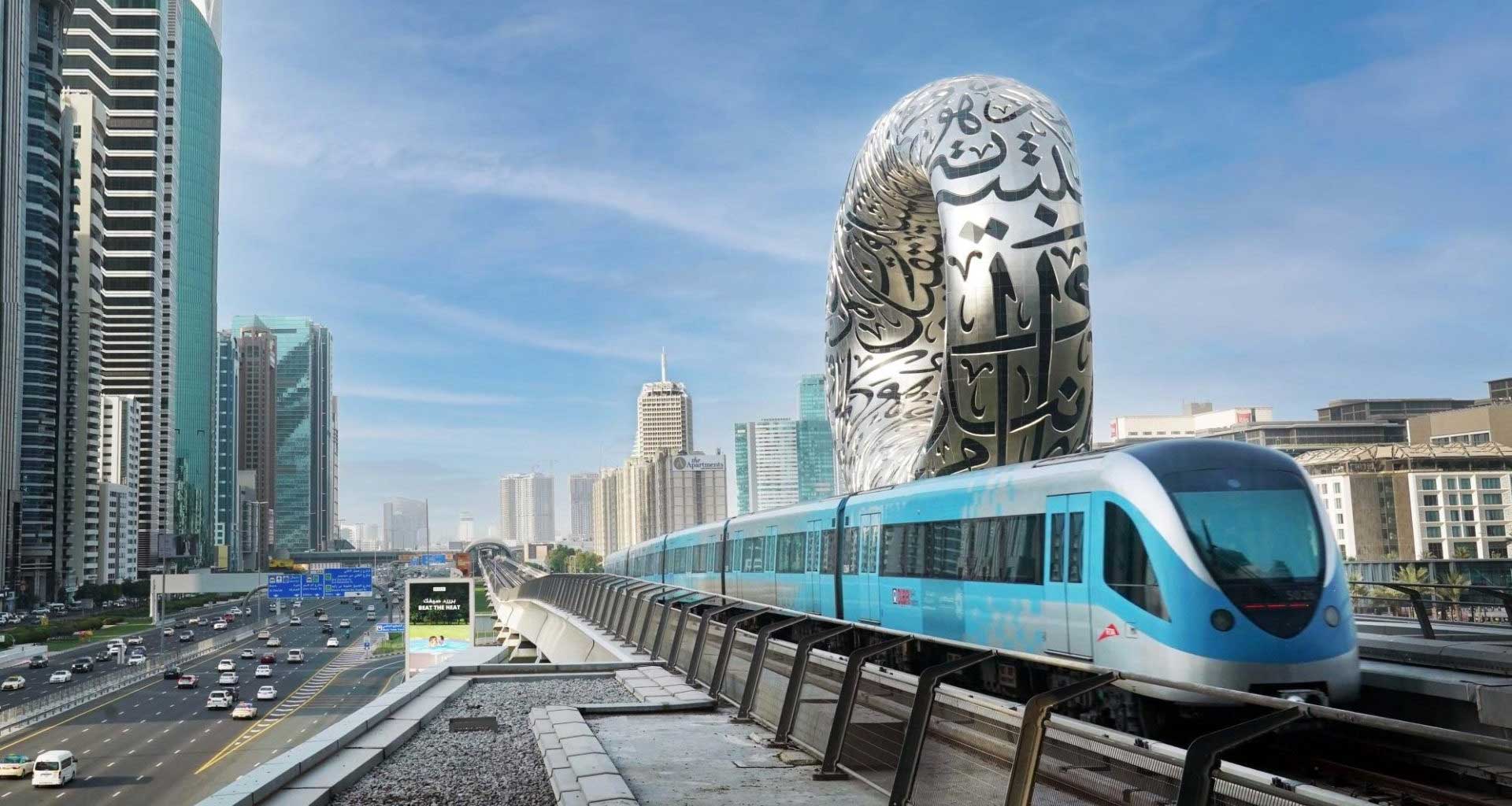
Using the public transportation system in Dubai as a wheelchair user is extremely easy. City buses and trains are completely wheelchair accessible, making it one of the best transit networks I have reviewed. Be sure to take advantage of the tips I’ve outlined below, as they’ll make your journey in, through and around Dubai hassle- and stress-free.
Metro Subway
The Dubai Metro is a fully-automated, driverless rail transportation system. The metro consists of two lines, Red and Green, which serve 49 total stations. Future expansion is planned, and will add three new lines to the network. Transfers between the Red and Green lines are possible at the Union and Bur Juman metro stations.
Many of the city’s top tourist destinations are within 1 kilometer walking distance of a metro station. Stations offer connections to city bus routes, which expand the reach of the public transportation system to all parts of Dubai. Trains operate both above and below-ground, depending on the area. All stations are enclosed and air conditioned. Some feature enclosed, elevated walkways to nearby attractions, such as the one connecting the Dubai Mall station to the mall and Burj Khalifa.
Wheelchair accessibility of the Dubai Metro, in stations and on trains, is excellent. All stations are equipped with elevators at each entrance. Given that many stations have up to 4 entrances, spread out across multiple blocks, wheelchair travelers won’t have to search for the entrance with an elevator: all are equipped. Elevators also exist between the station concourse and train platform. Metro trains are level with the station platform, and the gap is often less than one inch. Whether using a manual or powered wheelchair, you won’t have any difficulty using the metro system.
Wheelchair accessible restrooms are located beyond the fare gates in every Dubai Metro station. They are extremely accessible, and would meet the ADA requirements of the United States.
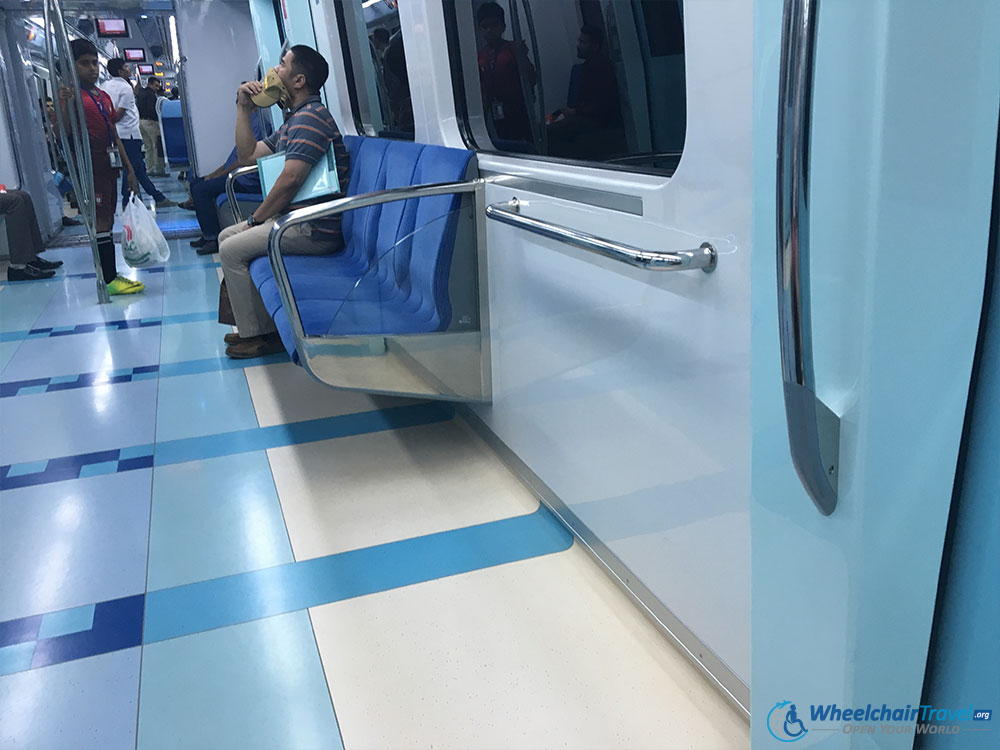
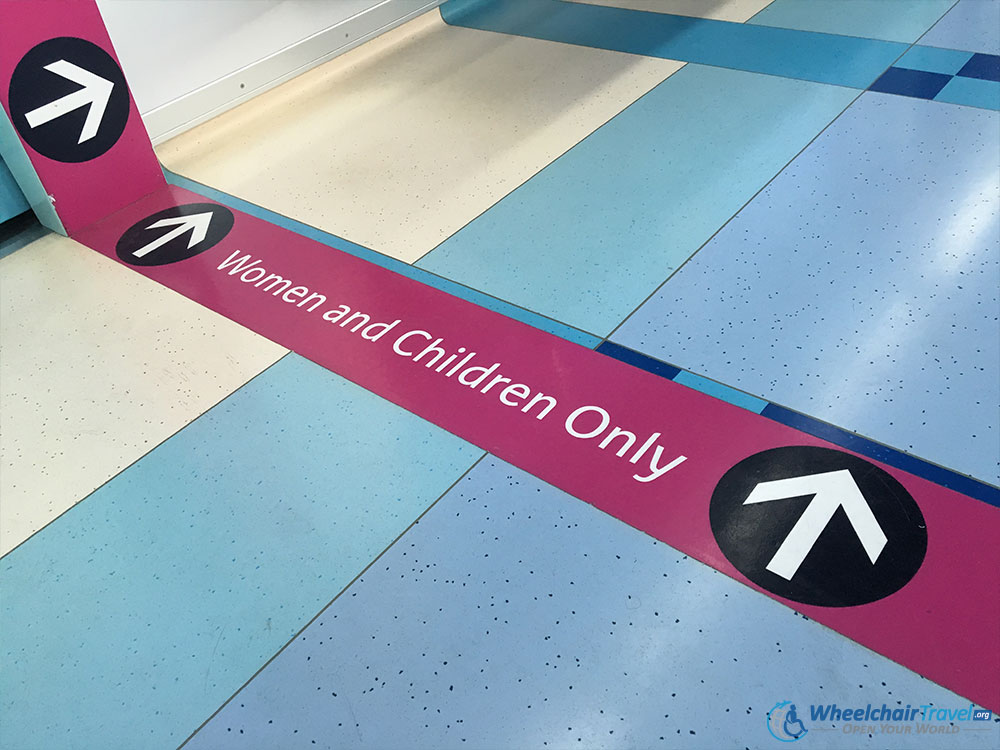
Wheelchair spaces are available in several cars throughout each train. Entrances nearest the wheelchair spaces are marked with the international wheelchair accessibility and disability logo on the glass wall which separates the platform from the tracks. Automatic sliding doors will open to permit access to the train on its arrival.
A few important things to note: The trains can become extremely crowded at different points throughout the day and within the city. Passengers will move to make room for you in the car, but there is no guarantee they’ll move from the designated wheelchair or stroller space. This is a situation wheelchair users commonly face on metro and subway systems throughout the world. Lock your wheels and enjoy the ride. There tends to be more space available in the Gold Class car, but the cost of riding there is more expensive. I elected to ride in the standard Silver Class and dealt with the crowds. Two cars per train feature a section reserved for women and children. These tend to be less crowded, but male wheelchair users should respect the restriction, for the safety and comfort of female passengers. These sections are marked by a solid pink line, pictured to the left. Female wheelchair users may of course use the space, but their male travel companions must remain outside of the zone.
Service to/from Airport: The Metro’s Red Line contains two stops at Dubai International Airport (DXB). The airport stations are wheelchair accessible and provide direct access (via elevator) to the ticketing, departures and arrivals levels. Be sure to consult your airline and ticket information to determine which terminal your flight will depart from.
Tram
The Dubai Tram is an on-street metro-like light rail, which extends from the Jumeirah Beach Residences to Al Sufouh Depot. Popular attractions along the 11-station route include the Dubai Marina, Mall of the Emirates, and Burj Al Arab Hotel. Unlike with other Dubai public transit options, there is a flat rate of 3 AED, regardless of the distance traveled, for those in Silver Class. The Tram connects with the Metro’s Red Line at the Jumeirah Lakes Towers and Dubai Marina stations.
The design of the trains and stations is almost identical to that of the metro, and the tram is fully accessible.
City Bus
More than 1,500 public transportation buses serve 193 routes in the City of Dubai. Although I can find no information verifying the number of buses that are wheelchair accessible, I was unable to find a city bus that was not equipped with a wheelchair accessible ramp and designated wheelchair space. It is thus possible that all Dubai buses are accessible, but I cannot confirm that. Accessible buses are marked with the international wheelchair accessibility and disability symbol, as pictured below:
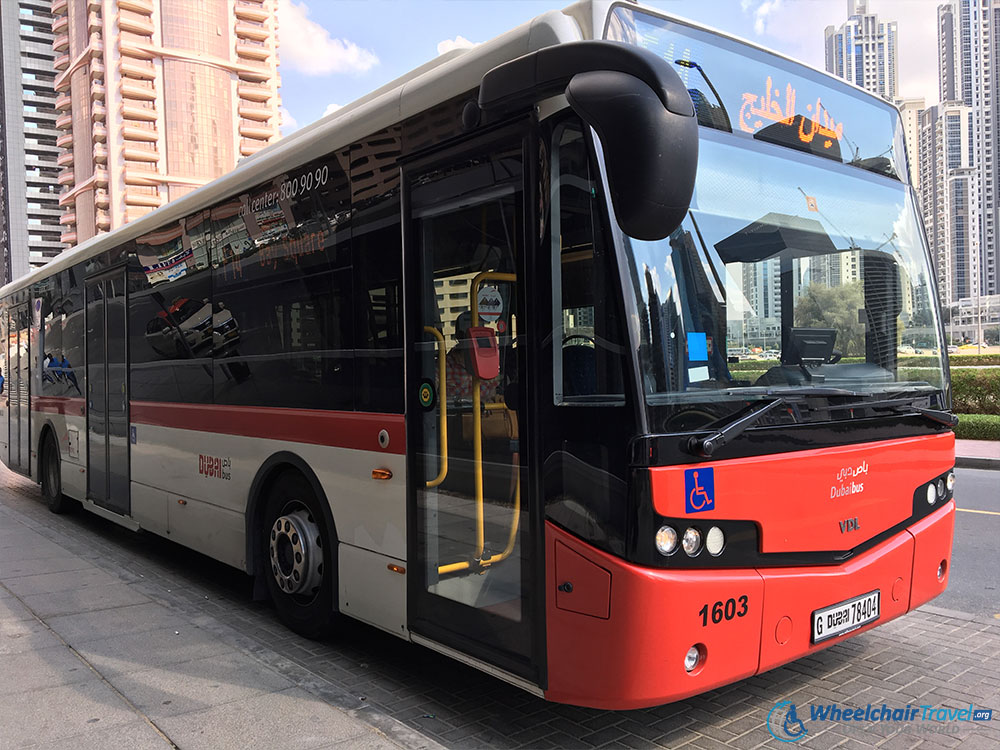
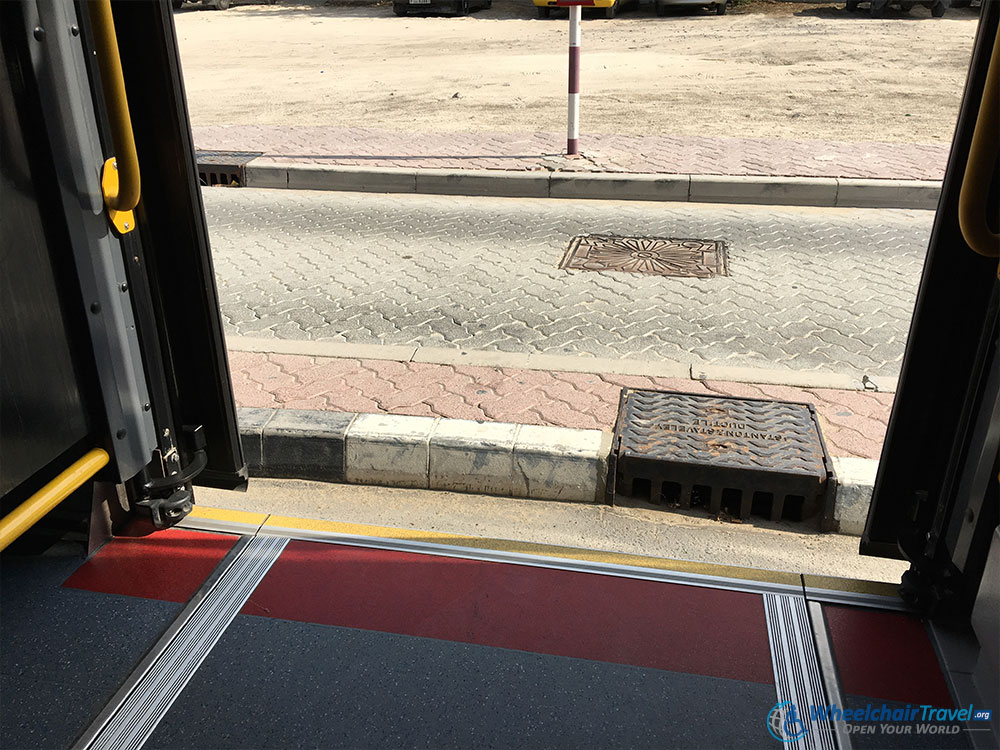
Wheelchair accessible ramps fold out from the center door. Flag the bus driver and he/she will come to assist you. A dedicated wheelchair space is available on the bus, and many feature a seatbelt with which to secure yourself. A stop request button is located below the window, easily within reach.
An important alert: Many stops are located next to extremely thin curbs that a wheelchair cannot access. If you intend to alight at one of these stops, ask the driver to stop beyond the curb.
I have included a picture of such a stop – my apologies for the poor quality. This stop was near to the Dubai Zoo – the driver was more than happy to pull up a bit, so that the ramp could be extended down onto the pavement of a side street. If you are using a power wheelchair, do not attempt to get off onto one of these mini curbs – you are likely to get stuck!
If you would like to board at one of these bus stops, position your wheelchair at the nearest accessible point, preferably beyond the stop marker, and flag the driver. I never had any trouble getting picked up when using this method.
For a complete list of city bus routes, schedules and times, visit www.dubai-bus.com.
Inter-Emirates Buses
11 bus routes connect Dubai with the other Emirates in the U.A.E. Despite what you may read elsewhere, I have confirmed the buses are NOT wheelchair accessible. You will need to be separated from your wheelchair and climb several stairs in order to ride the bus. Even if you are able to do this, I would advise powered wheelchair users to locate another transportation option. The risk of damage to your wheelchair during the loading process and over the course of the ride may be significant.
Taxis are relatively inexpensive in the Emirates. During my November 2015 trip, I attempted to take the bus from Abu Dhabi to Dubai. When I realized this would not be possible, I took a wheelchair accessible taxi 143 km (89 miles) at a cost of 235 AED (~$64 USD).
Fares and How to Pay
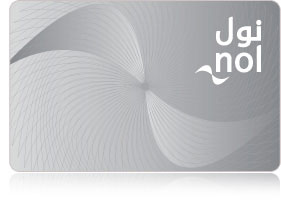
Single-ride tickets can be purchased at kiosks or information/ticket desks located in metro stations. Wheelchair travelers should elect to purchase the reloadable Nol card, which is sold to tourists in two types: a Silver Card, for travel in the Silver Class of service, and the Gold Card, for travel in Gold Class. Nol cards can be purchased at automated kiosks in metro stations.
I elected to purchase the Silver card, as travel in the Silver Class is one-half the price of that in Gold Class. There may be some benefits for wheelchair users in Gold Class on metro trains, but I made do just fine in Silver.
The fares for travel in the Silver Class of service are broken down by distance traveled. Dubai’s public transportation zone is divided up into 7 zones for fare collection purposes. I have copied the fare chart below (Gold prices noted in parentheses):
- Up to 3 kilometers: 3 AED (6 AED)
- Across 2 adjacent zones: 5 AED (10 AED)
- More than 2 zones: 7.50 AED (15 AED)
As mentioned earlier, there is a 3 AED (6 AED if in Gold Class) flat rate for travel on the Dubai Tram.
Nol cards can be purchased for 25 AED, and include a balance of 19 AED pre-loaded onto the card. It is important to note, you cannot use a Silver card for travel in the Gold Class of service! Fines can be quite substantial for sitting outside of your paid class.
Remember to tap-on and tap-off of public transit buses. A tap station is located next to the front and center doors. At the center door, the collection device is easily within reach for the wheelchair user. Failure to tap-off will result in collection of the maximum fare for your card (7.50 AED for Silver, 15 AED for Gold).
Metro stations have automated pay gates, so you won’t be able to forget to tap-in or tap-out. There is one wheelchair accessible gate per station. The Dubai Tram does not have pay gates, so you’ll need to tap your card on the fare boxes inside the stations.
For more information on the Nol card and fares, visit www.nol.ae.



